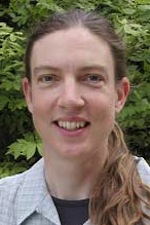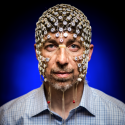UW team studies the mechanics of stronger bones
As human bones age, they undergo geometric changes and also lose minerals such as calcium that give them density and strength.
As a result, broken bones are one of the most common injuries in older people, and nearly 300,000 Americans are hospitalized each year for hip fractures alone. With fractures often come permanent losses in mobility.

Ploeg
“As we age, these are problems many of us face,” says Associate Professor Heidi-Lynn Ploeg, director of the Bone and Joint Biomechanics Laboratory at the University of Wisconsin–Madison. Working with a team of five graduate students, Ploeg is studying the mechanics of the human skeleton, with the aim of improving bone health for everyone — from infants with congenital defects to trauma victims and the elderly.
While other bone research might occur at the cellular level, Ploeg focuses on tissue, studying the mechanics of tissue strength and how her samples respond to pressure. Studies already have found that people can strengthen their bones — and keep them stronger — with a combination of exercise that puts stress on their bones, good diet, and hormone treatments.
But the details of how best they can combine those solutions to create recommendations have yet to be defined.
For example, there’s currently no way to directly measure a bone’s strength in a living human.
CT scans and MRIs can reveal mineral content — but more mineral deposits don’t necessarily indicate stronger bones, and even drug treatments that add minerals to weak bones might still not strengthen them.
Ploeg and her team can use data to determine what exercise, such as lifting weights or walking, and how much of it, can help stimulate new bone growth.
Using samples taken from patients undergoing hip replacements and a unique bioreactor that keeps those hip bone samples alive for weeks, Ploeg and her team can directly test how the tissue responds to different amounts and types of stress. Since response to stress depends on the strength of the bone, she can use that data to determine what exercise, such as lifting weights or walking, and how much of it, can help stimulate new bone growth.
By combining the application of stress with different levels of hormones, Ploeg can optimize the mix of exercise and hormone treatment, and create precise recommendations for bone loss prevention, as well as physical therapy programs.
None of these conclusions would be possible without the live bone samples, whose preservation, thanks to innovative sample preparation and a mix of good nutrition, temperature and protection from disease, has been an exciting new development. “The success so far is the process, and the unique experiments we can run as a result,” says Ploeg, who collaborated with colleagues in population health science to develop the bioreactor. “It’s very exciting to us that you can keep a human bone alive for seven weeks and run experiments on it.”
In other research, Ploeg also is studying the scale of an entire bone for such applications as bone-lengthening or deformity-correcting devices that can rest just outside a bone. What’s currently available must either go through the middle of a problematic bone, or rest as a cumbersome device outside the patient’s skin.
In perhaps as few as five years, she hopes to have results and products ready for clinical use. “I’m very excited about the potential of our research to benefit patients,” she says.
Tags: engineering, health & medicine

